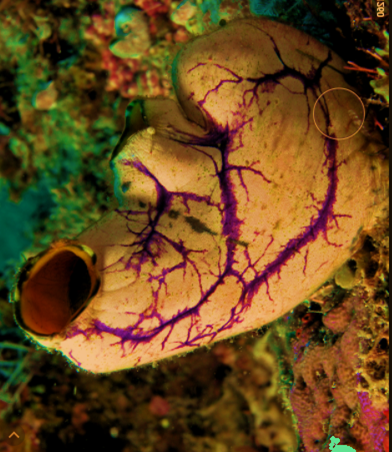
Retrogressive metamorphosis is observed in
(a)Balanoglossus
(b)Branchiostoma
(c)Herdsmania (Urochordata)
(d)All the above
Answer
496.5k+ views
Hint: It is also called sea squirts and is generally barrel-shaped. They are observed in marine environments. The chordate characteristics will be lost in the adult animal, as they attach themselves to a hard surface, they will eventually lose the tail, the nervous system, and therefore these animals cannot move.
Complete answer:
Retrogressive metamorphosis is a characteristic observed in Urochordata. In these organisms, the notochord which will be present in the larval stage will degenerate in the adult organisms. Thus, the non-chordate adult organism cannot move. This is called retrogressive metamorphosis. The advanced characteristics of the animal present in the larval stage will be lost in the adult organism.
Additional Information
Urochordata
-Urochordata is observed in the marine environment.
-Urochordata is also called tunicates because of the leathery sheath which surrounds their body possesses tuncin (a type of cellulose).
-They cannot move and they are filter-feeders. Filter feeders are a group of animals that will feed by filtering the ocean water and will eat the small particles.
-Since these animals will not move, the tail and the nervous system is reduced in the adult animals.
-They respire by gills and possess an open circulatory system.
-The notochord will be present in the larval stage but they will disappear in the adult animals. This process is called retrogressive metamorphosis.
-These animals lack the excretory system.
-Reproduction: Asexual reproduction via budding.
The above image represents the Urochordata image.
So, the correct answer is ‘Herdsmania (Urochordata)’.
Note:
The invertebrate organisms that closely resemble vertebrates are classified as protochordata. The protochordate is divided into hemichordata, Urochordata, and Cephalochordata. In this question given, Balanoglossus is a hemichordate, whereas Branchiostoma is a cephalochordate animal.

Complete answer:
Retrogressive metamorphosis is a characteristic observed in Urochordata. In these organisms, the notochord which will be present in the larval stage will degenerate in the adult organisms. Thus, the non-chordate adult organism cannot move. This is called retrogressive metamorphosis. The advanced characteristics of the animal present in the larval stage will be lost in the adult organism.
Additional Information
Urochordata
-Urochordata is observed in the marine environment.
-Urochordata is also called tunicates because of the leathery sheath which surrounds their body possesses tuncin (a type of cellulose).
-They cannot move and they are filter-feeders. Filter feeders are a group of animals that will feed by filtering the ocean water and will eat the small particles.
-Since these animals will not move, the tail and the nervous system is reduced in the adult animals.
-They respire by gills and possess an open circulatory system.
-The notochord will be present in the larval stage but they will disappear in the adult animals. This process is called retrogressive metamorphosis.
-These animals lack the excretory system.
-Reproduction: Asexual reproduction via budding.
The above image represents the Urochordata image.
So, the correct answer is ‘Herdsmania (Urochordata)’.
Note:
The invertebrate organisms that closely resemble vertebrates are classified as protochordata. The protochordate is divided into hemichordata, Urochordata, and Cephalochordata. In this question given, Balanoglossus is a hemichordate, whereas Branchiostoma is a cephalochordate animal.

Recently Updated Pages
Master Class 9 General Knowledge: Engaging Questions & Answers for Success

Master Class 9 English: Engaging Questions & Answers for Success

Master Class 9 Science: Engaging Questions & Answers for Success

Master Class 9 Social Science: Engaging Questions & Answers for Success

Master Class 9 Maths: Engaging Questions & Answers for Success

Class 9 Question and Answer - Your Ultimate Solutions Guide

Trending doubts
State and prove Bernoullis theorem class 11 physics CBSE

What are Quantum numbers Explain the quantum number class 11 chemistry CBSE

Write the differences between monocot plants and dicot class 11 biology CBSE

Who built the Grand Trunk Road AChandragupta Maurya class 11 social science CBSE

1 ton equals to A 100 kg B 1000 kg C 10 kg D 10000 class 11 physics CBSE

State the laws of reflection of light




